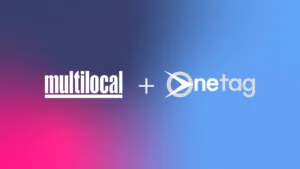Rob Webster is Founder of Canton Marketing Solutions. He’s worked in the adtech industry since 2001 and is NDA’s monthly adtech columnist.
The major news story in digital marketing recently has to be the testimonies before congress from the leaders of Amazon, Google and Facebook. In a difficult year for the world, these hearings highlighted some of the deep challenges advertising faces.
It was incredibly refreshing then for Nike to release a new advert that reminded us of what good advertising can look like away from concerns over ownership, control, privacy and the like. A great concept, excellently produced with real innovation able to reach the desired audience – all those involved should be highly commended for reminding us what really matters.
The NIke advert also reminds us of the Yin and Yang of advertising. For the Yin read creativity and strategy – the yang logistics and execution. Both are equally important however when you have such an amazing Yin as Nike has it makes the Yang so much easier.
It is worth remembering though that the same can work in reverse and truly amazing buying and operations can elevate average (not bad) strategy and creativity. It is in this world of logistics that such concepts as programmatic, tracking, targeting and privacy live. Whilst it hasn’t hit the heights of the Nike ad and has been undercover in recent months it is changing rapidly and in my view even more impressively.
Perhaps the legacy of Covid in advertising might be that it allowed the industry the time and focus to get its house in order.
A quiet revolution in tracking – The first party future.
Briefly I need to talk about the difference between first and third party cookie tracking. I will stop after this paragraph. For a long time advertisers have lent heavily on third party tracking cookies, measuring websites and advertising. First party options have been around for a while with the likes of Flashtalking and more expensive analytics options leading the way however the vast majority of tracking has been (and is) third party. This really matters as by definition it means that a brand’s key data is entrusted to a third party. It also means that consumers are being asked to trust tracking companies with their data to which they have no relationship. Furthermore it opens up easier ways for companies to use this data to which the user has not agreed.
This is starting to change. Larger brands are all moving to exclusively using first party systems on their sites. For smaller players open source options like snowplough among others are changing the game. Furthermore these systems allow and encourage advertisers and publishers to take more control of their data leading to better analysis and as such data is mostly stored in client-owned cloud architecture it opens up brands to running their own machine learning and AI work on their data.
This is the part that can be truly transformational to how brands understand their audience and will eventually lead to dramatic improvements in audience understanding and attribution. Such developments can allow advertisers and publishers to prosper in a privacy first world and still have data at the heart of their business.
It also firmly moves control away from the various technology companies and towards the brands which is a very healthy development.
First Party Data Companies. A sector on Fire.
Whilst the change to analytics and tracking has been a quiet resolution, privacy-first data companies have been the financial success story of the summer. From the growth in LiveRamp to the financial sector darlings of InfoSum, Permutive and Mediarithmics to the already hot CDP space. Add to the The Trade Desks continued rise and its recent focus on identity.
It is these companies and more that are attracting the investors, talent and clients over the summer. Yet despite the attention few in digital media know exactly how they work and how they can solve the industry’s challenges. Interestingly whilst there is overlap I believe these companies are actually complementary and that most advertisers and publishers should be looking to work with a selection of firms in this space depending on their need.
Precisely how they operate is a question for the firms themselves and I encourage the industry to reach out to them and learn from some of the smartest people in the industry. However the broad themes start with first party tracking above, control of data at a first party registration data level, consent control (often beyond the consent frameworks commonly in use) and the ability to collaborate and syndicate data safely and compliantly across the media ecosystem.
More a ID Race than a war
The talk of recent years has been of a war for control of the ID. Actually what is happening is more of a race with companies that have great products racing to get market share and the network effects scale can bring.
A further race has been from those companies behind in this space to catch up with the market leaders. The benefit of a race not a war is that it encourages collaboration in the name of speed and whilst it is a race it likely won’t be at least for some time a case of winner takes all. There are likely to be many winners that emerge from this particular race and it’s one that in my book makes for fascinating viewing and indeed fun to take part in in some small way.
A new world of Networks.
We have spent the article ignoring the efforts of the giants (Google, Amazon, Facebook, Apple, Microsoft ). To conclude though we need to look at two recent announcements. Firstly the big restrictions coming to IDFA in app tracking on Apple devices from mid September and secondly Google’s announcement of the trust token API.
Other articles delve into the intricacies of these changes. However respectively the Apple change is a step backwards for in-app marketing and is strangely inconsistent with the forthcoming changes happening to Chrome and Safari. The trust Token API can be a big step forward for efforts against fraud allowing large publishers to help identify real users and by extension remove fraudulent traffic from the ecosystem.
I should really have said ecosystems. Because what both measures encourage is the network effects of publishers and advertisers coming together. Indeed all the innovations and developments talked about today massively encourage these network effects.
This leaves me with the conclusion that the future is going to be one of connected privacy-first ecosystems that can allow advertising to flourish. The aforementioned giants will make up some of the ecosystems, large publishers and data groups will form new ecosystems.
Such ecosystems will have their and their users valuable data secured behind high walls. Fraud and poor content, hopefully hateful content can also be kept out by these walls. Yet the ecosystems will be sufficiently connected to allow all media to be seamlessly planned, bought and measured. Some ecosystems will be more or less open, more or less suited to certain tasks and advertisers will vote with their ad spend as to where the money will flow.
This can be a better world and one the media and advertising industry can be proud of.









